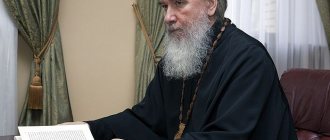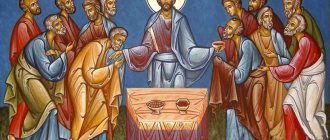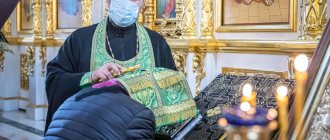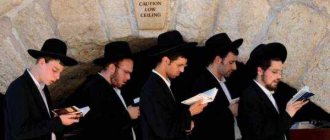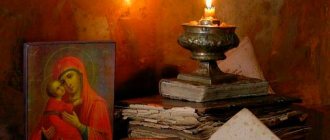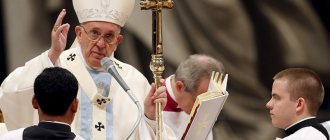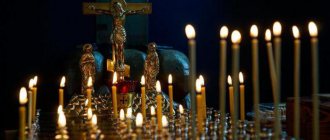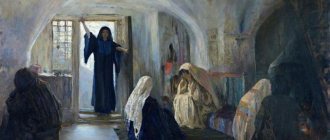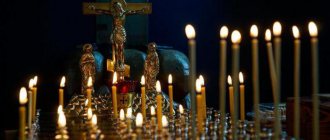Christianity is one of the Abrahamic religions, based on the act of atonement for the sins of mankind by the God-man Jesus Christ described in the Gospel. In terms of prevalence, this monotheistic religion is considered the largest in the world; today the number of its adherents, according to the UN, reaches 1.5 billion. Christian traditions, based on the Old and New Testaments, determine the church and home life of believers.
The main canons of the direction in Christianity
Christianity as a religion originated in the 1st century among Palestinian Jews and quickly spread among the Greco-Romans and other ethnic groups. The uniqueness of this religion is that it assumes not only the eternity of the human soul, but also the resurrection of the body after the afterlife. True, not all resurrected people will be worthy of staying in the Kingdom of Heaven.
The main directions in Christianity today are considered to be Catholicism, Orthodoxy and Protestantism. And although the ancient Christian religious traditions and the main dogmas of Christianity - the belief in the coming resurrection and the divine essence of Jesus Christ - are common to them, each of the directions has its own peculiarities of doctrine and differences in the interpretation of some religious canons.
The fundamental difference between the Catholic and Orthodox Churches is the understanding of the unity of the Church. For the Orthodox, it is enough to share one faith and sacraments; they consider each local Church of the episcopate to be the embodiment of the Universal Church; Catholics, in addition to this, see the need for a unified leadership of all churches, which is exercised by the supreme ruler of the Holy See - the Pope.
The features that distinguish the Protestant Church from the Catholic and Orthodox Church are more numerous. Thus, Protestants recognize the Bible, but reject the Holy Tradition of the Church and church rites. It is not customary for them to pray for the dead, believing that thanks to their prayers the Lord will ease their posthumous fate. Protestants deny fasting and believe that recognizing Jesus Christ as God is already enough for salvation, and no works are needed for this. Whereas Catholics and Orthodox Christians claim that it is necessary to prove one’s faith through deeds, fulfilling the commandments of the Father.
How does the concept of “spiritual tradition” differ from similar ones?
In science, there are different interpretations of the concepts of spiritual tradition, religious tradition, cultural tradition, folk tradition. So, following this differentiation, we will briefly present the differences and commonality of these concepts, which will help us understand the features of the Russian spiritual tradition. Thus, one must distinguish:
- Spiritual tradition
- Religious tradition
- Cultural tradition
- Folk tradition
Spiritual tradition is the preservation and production of experience that leads a person to the development of his incorporeal essence, the deepening of transcendental experience, to moral subtle development, the transmission of knowledge and practices that do not give an immediate materialized result. And therefore, spiritual traditions can be regarded as meaningless for people who do not live a spiritual life. Spiritual tradition is the core of religious tradition.
But the religious tradition is broader than the spiritual one, since it includes, in addition to spiritual practice, which has an internal expression (latent), also external, ritual practice, religious behavior, and institutions. The Russian religious tradition is an Orthodox tradition . Here these concepts can be considered as synonyms. Being a culture-forming religion, Orthodoxy is the basis of the Russian cultural tradition. But the concept of “cultural tradition” includes, in addition to religious, many other traditions.
Cultural tradition is the preservation and transmission of the entire wealth of cultural heritage, expressed, in addition to religion, in ideas, in philosophy, in scientific and professional knowledge, in art, in cultural monuments, in the peculiarities of the ethnographic existence of the people. We can say that cultural tradition has a projection in the consciousness of the people, this is its perceived wealth.
But we can also highlight a layer of folk tradition , in which, in addition to consciousness, the subconscious of the people is also accumulated. Folk tradition preserves archaic remnants, archetypes and cultural codes, the collective unconscious, which largely shapes the reality of folk life.
Religious traditions of Christians
In most religions, there are special ritual actions - sacraments, through which God's saving grace is invisibly transmitted to a person. Initially, in the traditions of the Christian faith there were two sacraments - baptism and communion.
In 1279, at the Ecumenical Council in Lyon, five more church rites were included in the list of sacraments. They are recognized by the Orthodox and Catholic churches; Protestants interpret church sacraments as a simple religious ritual.
- Baptism is a three-time immersion in the water of the holy font (or dousing with water), accompanied by the reading of prayers. The ritual is performed as a sign of a person’s involvement in the Church, and is conducted by a clergyman. A baptized person wears a cross around his neck and has the right to take part in church ceremonies.
- Communion (Eucharist) - communion with Christ through the consumption of consecrated bread and wine in a special way.
- Repentance (confession) is a confession of committed sins before a priest who has the right to absolve sins on behalf of the Lord. It is believed that self-reproof and the determination not to repeat sins bestow God's mercy.
- Confirmation is a sacrament performed on a believer, usually after Baptism. A person receives forgiveness of sins and the “seal of the gift of the Holy Spirit” on his forehead. During the ceremony, the priest anoints certain parts of the believer’s body with a composition of fragrant oils - consecrated myrrh.
- Blessing of oil is a sacrament performed on the sick, anointing the body with consecrated oil. It is believed that such a ritual invokes the grace of God and promotes healing. In Christianity, there is also the rite of Anointing, which consists of applying the sign of the cross with oil to the forehead of the believer. This ritual is not a Sacrament.
- Priesthood is a rite of passage to serve in the church as a deacon, presbyter or bishop (bishop). Ordination to the rank of clergy is performed by a bishop and gives the right to conduct church sacraments and rituals.
- Wedding is the main ritual of the Christian wedding ceremony. The union of a man and a woman blessed by the church seals marriage in heaven. When Christians get married, they take a vow of fidelity to Christ and each other. Christian family traditions are based on compliance with the rules bequeathed by the Savior: to maintain moral purity, to live in love and harmony.
Blessing of Waters
This is the name of the rite of consecration of water. According to tradition, the blessing of water can be great or small. In the first version, the ritual is performed once a year, and in the second, it is performed many times over twelve months. This is done during Baptism or during prayer services.
The ceremony is held in honor of a great event - the immersion of Jesus Christ in the waters of the Jordan. This moment is described in the Gospel. It was then that Jesus became the prototype of the washing away of all human sins. Washing takes place in the holy font, which opens the way for people into the Church of Christ.
Christian holidays
The period of formation of Christian holidays and traditions falls on the V-VI centuries. The most important holiday among Christians is the date of the Resurrection of Jesus Christ, Easter, which is celebrated on the first Sunday after the spring full moon.
According to the general church calendar, Christians celebrate:
- Christmas (January 7),
- Epiphany (January 19),
- Meeting (February 15),
- Annunciation (April 7),
- Palm Sunday (celebrated one week before Easter),
- Ascension of the Lord (celebrated on the 40th day after Easter),
- Trinity (celebrated on the 50th day after Easter),
- Transfiguration of the Lord (August 19),
- Assumption of the Blessed Virgin Mary (August 28),
- Nativity of the Blessed Virgin Mary (September 21),
- Exaltation of the Holy Cross (September 27),
- Entry into the Temple of the Blessed Virgin Mary (December 4).
All Christian spiritual traditions are based on church dogmas, the main of which is the confidence that after the second coming of Christ the dead will be able to be resurrected in the flesh, and those who lived righteously on Earth will be able to enter the Kingdom of Heaven and receive eternal life.
Church schism
The unification of the rituals of the Russian Orthodox Church occurred after the split of the church. Why did it happen? Let's figure it out.
Until now, the Russian Orthodox Church has not been affected by reform. The last changes occurred in the seventeenth century, but whether there will be new ones is still unknown. Let's talk about previous experience.
As early as 1640, there was talk about the need for church reform. Representatives of the clergy even then wanted to unify the rules of worship and church texts. But they could not achieve unity in choosing a model to emulate. Someone wanted to use Greek church books as a model, while others wanted to use ancient Russian books.
As a result, those who wanted to bring church rituals and books in accordance with the Byzantine canons won. There are several explanations for this:
- The Russian state sought to stabilize its own position among other Orthodox countries. In government circles they often spoke of Moscow as the third Rome; this theory was put forward by Philotheus, a Pskov elder who lived in the fifteenth century. The church schism that occurred in 1054 led to the fact that Constantinople began to be considered the Orthodox center. Philotheus believed that after the fall of Byzantium, it was the capital of the Russian state that would become the stronghold of the true Orthodox faith. In order for Moscow to receive this status, the Russian Tsar needed to enlist the support of the Greek Church. And in order to receive it, it was necessary to conduct a divine service in accordance with local rules.
- In 1654, the Pereyaslav Rada decided that the territory of Polish Ukraine should join Russia. In the new territory, the Orthodox liturgy was conducted according to Greek rules, and therefore the unification of rituals and rules would contribute to the unification of Little Russia and Russia.
- Not so long ago, the Time of Troubles passed, and popular unrest was still taking place throughout the country. If uniform rules of church life had been established, the process of national unity would have been much faster and more fruitful.
- Russian worship did not correspond to Byzantine canons. Making changes to liturgical rules is considered secondary in carrying out church reform. By the way, the church schism was caused by these edits.
Under whom did the church split occur? It happened under Emperor Alexei Mikhailovich, who reigned from 1645 to 1676. He never ignored problems that concerned the Russian people. The tsar considered himself Orthodox, and therefore devoted a lot of attention and time to the affairs of the church.
The church schism in our country is firmly connected with the name of Patriarch Nikon. In the world his name was Nikita Minin, he became a clergyman at the request of his parents and was very successful. One day Nikon was introduced to young Alexei Mikhailovich, it was in 1646. Then Minin came to Moscow in order to settle monastic affairs. The seventeen-year-old sovereign appreciated Nikon's efforts and left him in Moscow. Nikon had a very strong influence on the sovereign and actively participated in resolving state issues. In 1652, Nikon became patriarch and began preparations for church reform, which had been brewing for a long time.
First of all, the patriarch began to edit all books of the Orthodox religion and rituals. This was done to ensure that they complied with Greek laws. Despite this, 1653 is considered the beginning of the church schism, because changes at that time affected liturgical rules, which led to Nikon’s confrontation with supporters and adherents of old rituals and rules.
So, what did Patriarch Nikon do?
- Replaced the two-finger sign with a three-finger one. It was precisely this innovation that caused the most unrest among the Old Believers. The new sign of the cross was considered disrespect for God, because three fingers made a fig.
- The Patriarch introduced a new spelling of the name of God. Now it was necessary to write “Jesus”, and not as before the reform - “Jesus”.
- The number of prosphoras for the liturgy was reduced.
- The changes also affected bows. Now there is no need to make prostrations; instead, bows from the waist have appeared.
- Since the reform, one should move against the sun during the procession.
- During church singing, “Hallelujah” is now said three times, instead of the previous two.
So, what are the reasons for the split? Before answering this question, it is necessary to understand what is called a church schism. So, they call the separation of a certain part of the believers from the Orthodox Church; the Old Believers opposed the transformations that Nikon wanted to introduce.
The reasons for the schism, of course, greatly influenced the further history of the Russian state and were caused by the short-sighted policies of the church and secular authorities.
A church schism can be defined as confrontation or cooling, which means that all this had a bad impact on the relationship between the church and the authorities. Patriarch Nikon is to blame for this, or rather, his harsh methods. This led to the fact that in 1660 the patriarch lost his rank. As time passed, he was completely deprived of his holy orders and exiled to the Belozersky Feropontov Monastery.
But this does not mean that reforms ended with the resignation of the patriarch. In 1666, new church books and rituals were approved, which had to be accepted by the entire Orthodox Church. The Church Council decided that those people who were supporters of the old faith were not only excommunicated from the church but were even equated with heretics.
